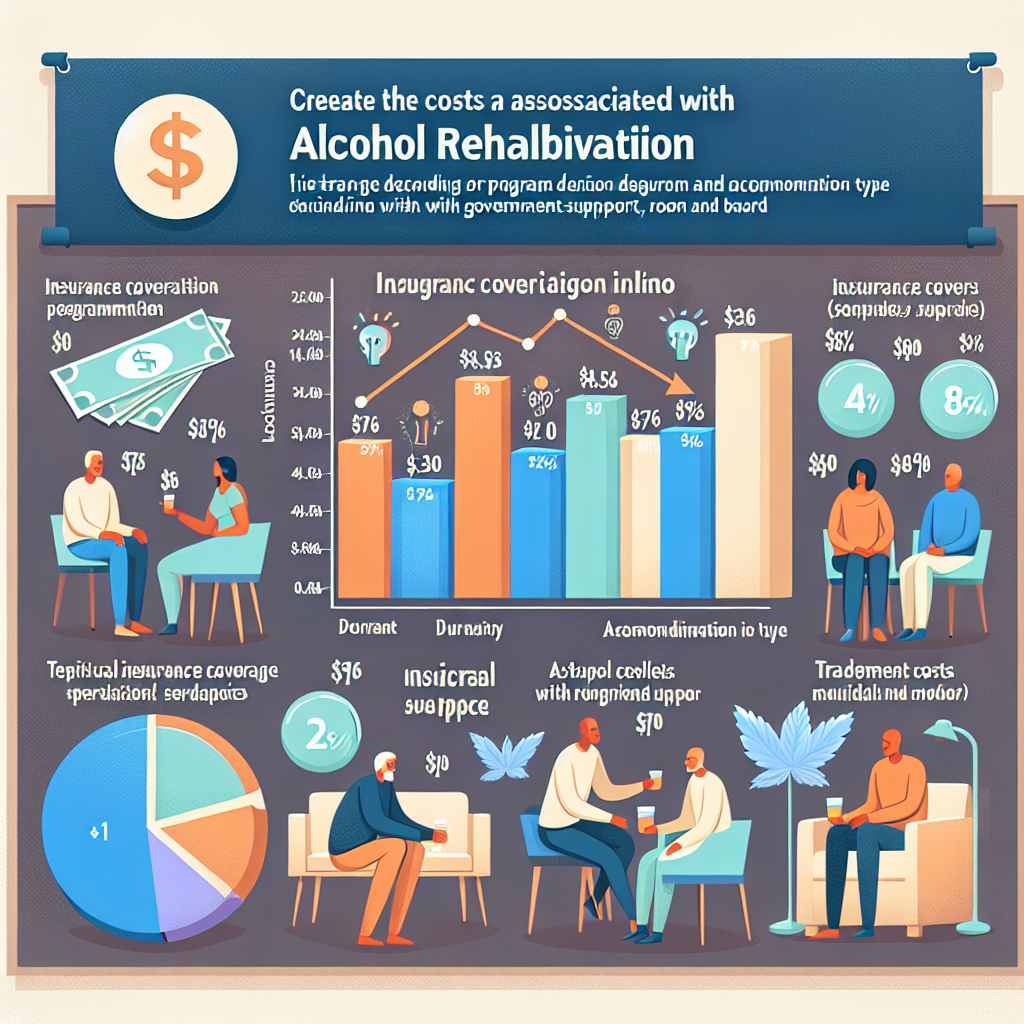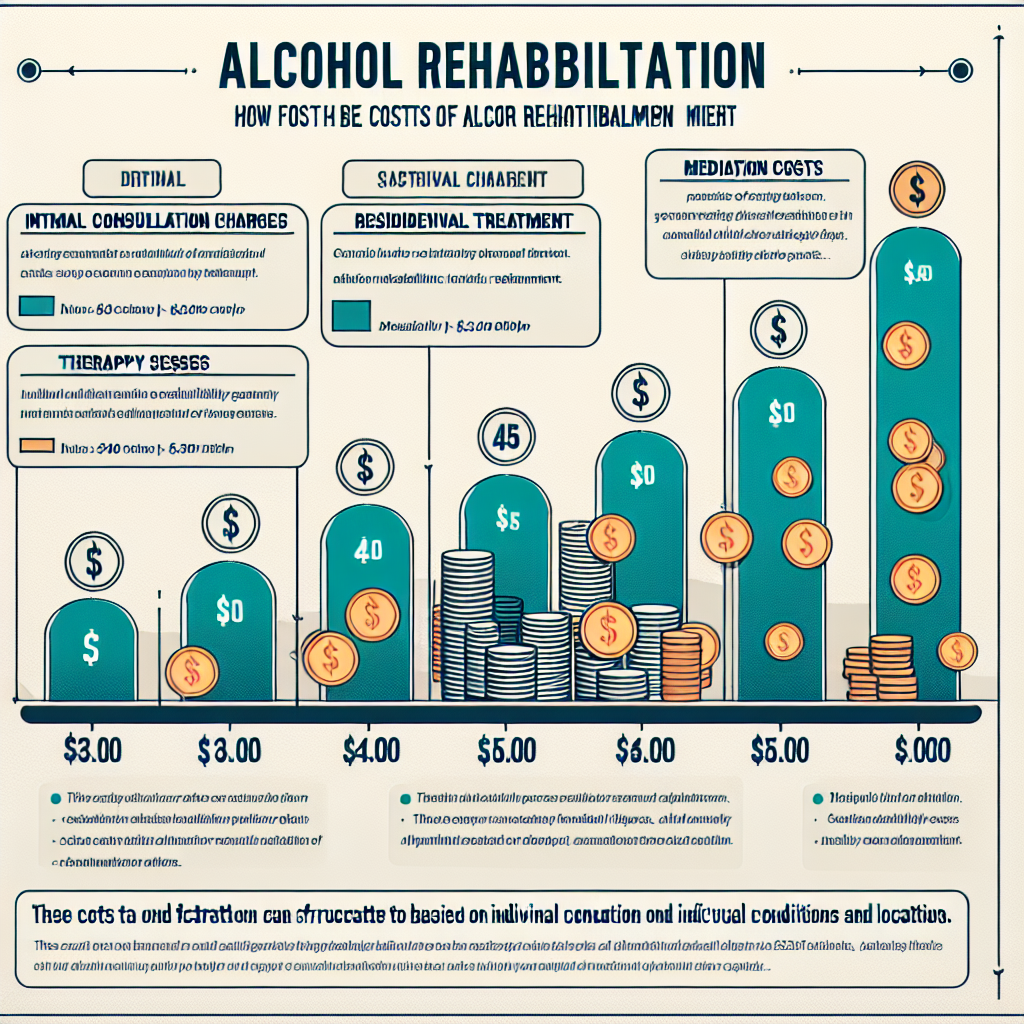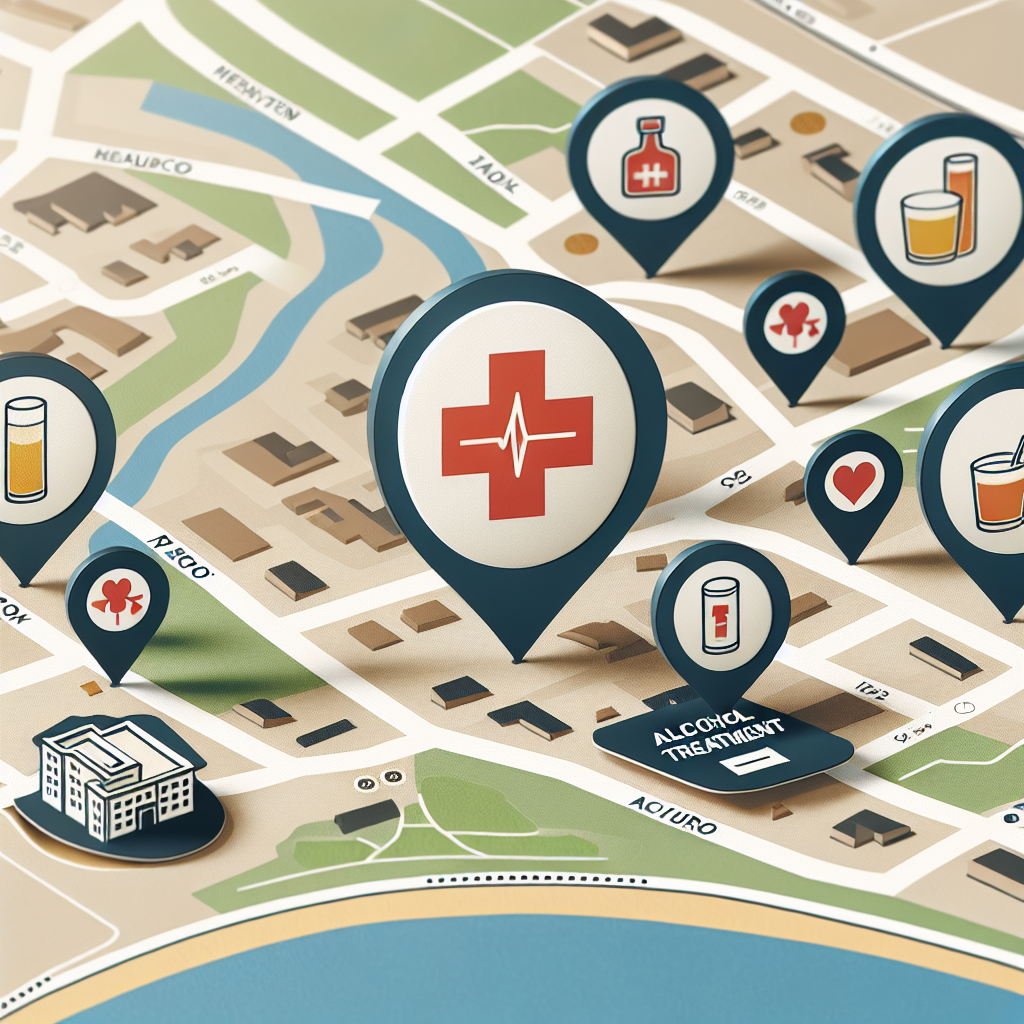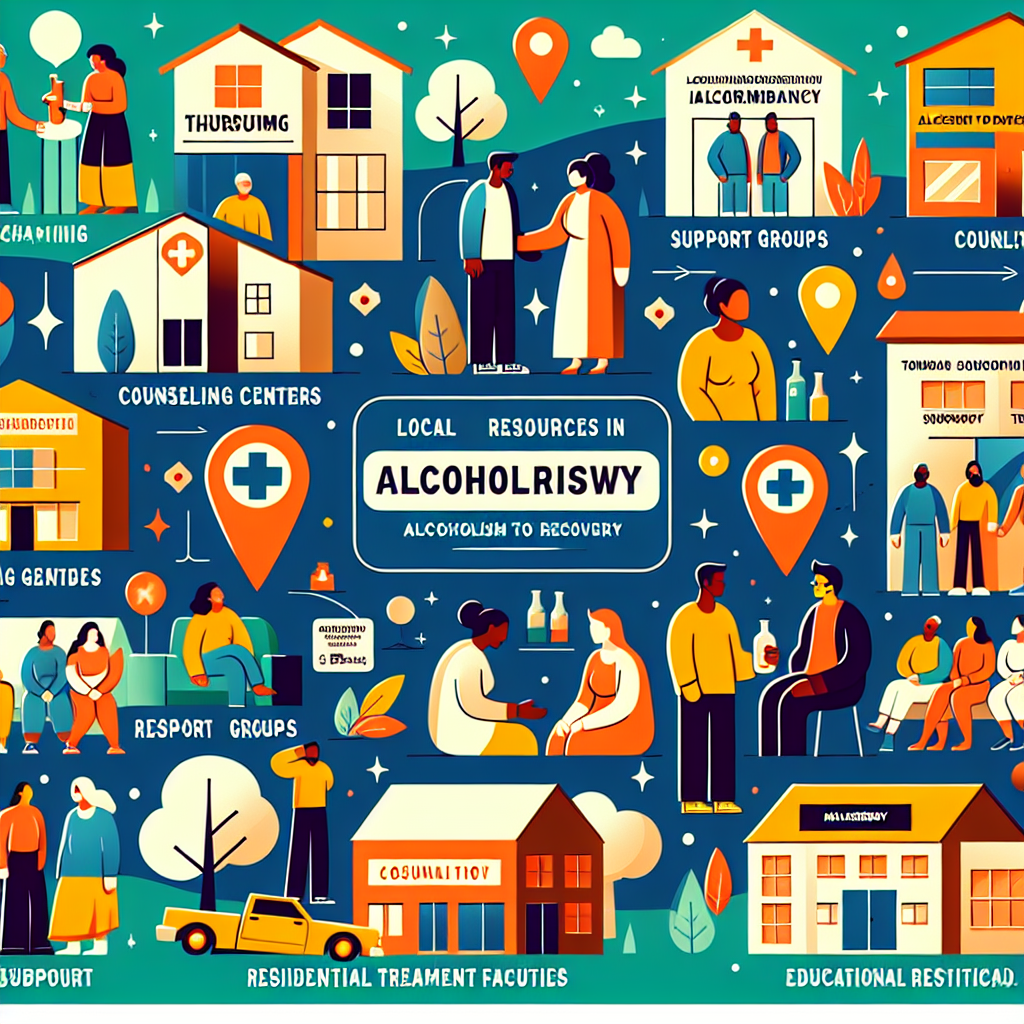-
Table of Contents

“Invest in Recovery: Understanding the Costs of Alcohol Rehab for a Brighter Future”
Introduction
The costs of alcohol rehab can vary widely depending on several factors, including the type of treatment program, the duration of the program, the location of the facility, and the level of care required. Generally, alcohol rehab programs can be categorized into inpatient and outpatient treatments. Inpatient programs, which provide intensive, round-the-clock care, tend to be more expensive than outpatient programs, which offer more flexibility and allow patients to live at home while receiving treatment. Additional costs may include medical detoxification, therapy sessions, medication, and aftercare services. Insurance coverage, financial aid, and sliding scale fees can also impact the overall cost of alcohol rehab. Understanding these variables is crucial for individuals seeking effective and affordable treatment options.
Understanding the Financial Breakdown of Alcohol Rehab Programs
Understanding the financial breakdown of alcohol rehab programs is crucial for anyone considering this life-changing step. The costs associated with alcohol rehab can vary widely, influenced by several factors such as the type of program, the duration of treatment, and the amenities offered. However, it is essential to view these expenses not merely as costs but as investments in a healthier, more fulfilling life.
To begin with, the type of rehab program significantly impacts the overall cost. Inpatient rehab programs, where individuals reside at the facility for the duration of their treatment, tend to be more expensive than outpatient programs. This is because inpatient programs provide round-the-clock care, including meals, lodging, and intensive therapy sessions. On the other hand, outpatient programs allow individuals to live at home while attending scheduled treatment sessions, making them a more affordable option. Despite the higher cost, inpatient programs often offer a more immersive and supportive environment, which can be crucial for those with severe addiction issues.
Moreover, the duration of the treatment also plays a pivotal role in determining the cost. Short-term rehab programs, typically lasting 28 to 30 days, are less expensive than long-term programs, which can extend to 60, 90 days, or even longer. While short-term programs can be effective, long-term programs provide extended support and a greater chance of sustained recovery. It is important to weigh the benefits of a longer treatment period against the additional costs, considering the potential for a more stable and lasting recovery.
Additionally, the amenities and services offered by the rehab facility can influence the overall cost. Luxury rehab centers, which provide high-end amenities such as private rooms, gourmet meals, spa services, and recreational activities, come with a higher price tag. These facilities often cater to individuals seeking a more comfortable and private rehab experience. Conversely, standard rehab centers focus on providing essential treatment services without the added frills, making them a more cost-effective option. While luxury amenities can enhance the rehab experience, the core focus should always be on the quality of care and the effectiveness of the treatment program.
Insurance coverage is another critical factor to consider when evaluating the costs of alcohol rehab. Many health insurance plans cover a portion of rehab expenses, significantly reducing the out-of-pocket costs for individuals. It is advisable to thoroughly review your insurance policy and consult with your provider to understand the extent of coverage available for addiction treatment. Additionally, some rehab centers offer financing options or sliding scale fees based on income, making treatment more accessible to those with financial constraints.
Despite the financial considerations, it is important to recognize the long-term benefits of investing in alcohol rehab. The cost of untreated addiction can far exceed the expenses of rehab, considering the potential for lost income, legal issues, and health complications. More importantly, the value of regaining control over one’s life, improving relationships, and achieving personal goals is immeasurable.
In conclusion, while the costs of alcohol rehab can vary, understanding the financial breakdown helps in making an informed decision. By considering the type of program, duration of treatment, amenities offered, and insurance coverage, individuals can find a rehab option that aligns with their needs and budget. Ultimately, the investment in alcohol rehab is an investment in a healthier, more fulfilling future, making it a worthwhile endeavor for those seeking to overcome addiction.
Hidden Expenses in Alcohol Rehab: What to Expect
When considering alcohol rehabilitation, many individuals focus primarily on the upfront costs of treatment programs. However, hidden expenses can significantly impact the overall financial burden. Understanding these hidden costs is crucial for anyone embarking on the journey to sobriety. By being well-informed, individuals and their families can better prepare for the financial aspects of recovery, ensuring a smoother and more successful rehabilitation process.
One of the first hidden expenses to consider is the cost of medical detoxification. Detox is often the initial step in alcohol rehab, and it involves the supervised withdrawal from alcohol. This process can be medically intensive, requiring constant monitoring and medication to manage withdrawal symptoms. While some rehab programs include detox in their overall cost, others may charge separately, leading to unexpected expenses.
Additionally, therapy and counseling are integral components of alcohol rehab. While many programs offer group therapy sessions as part of their package, individual therapy sessions with licensed professionals may come at an extra cost. These one-on-one sessions are crucial for addressing personal issues and developing coping strategies, making them an essential part of the recovery process. Therefore, it is important to inquire about the availability and cost of individual therapy when choosing a rehab program.
Another hidden expense is the cost of medications. During and after rehab, individuals may require medications to manage withdrawal symptoms, mental health conditions, or cravings. These medications can be expensive, especially if they are not covered by insurance. It is essential to discuss medication costs with healthcare providers and explore insurance coverage options to avoid unexpected financial strain.
Moreover, the length of stay in a rehab facility can significantly impact the overall cost. While some individuals may require only a short-term stay, others may need long-term treatment to achieve lasting sobriety. Extended stays can lead to higher costs, and it is important to have a clear understanding of the recommended treatment duration and associated expenses.
In addition to the direct costs of treatment, there are also indirect expenses to consider. For instance, taking time off work to attend rehab can result in lost wages. While some employers may offer paid leave or short-term disability benefits, others may not, leading to financial strain. It is important to explore all available options and plan accordingly to minimize the impact on income.
Furthermore, after completing a rehab program, ongoing support and aftercare are essential for maintaining sobriety. This may include outpatient therapy, support group meetings, and follow-up appointments with healthcare providers. These services often come with additional costs, but they are crucial for preventing relapse and ensuring long-term recovery.
Transportation costs can also add up, especially if the rehab facility is located far from home. Travel expenses for family visits, follow-up appointments, and support group meetings can quickly become significant. It is important to factor in these costs when planning for rehab to avoid financial surprises.
Lastly, lifestyle changes during and after rehab can lead to additional expenses. Adopting a healthier lifestyle, such as engaging in physical activities, eating nutritious foods, and participating in sober social activities, can incur costs. While these changes are beneficial for overall well-being, it is important to budget for them to ensure a smooth transition to a sober life.
In conclusion, while the primary focus of alcohol rehab is on achieving sobriety, it is essential to be aware of the hidden expenses that can arise throughout the process. By understanding and planning for these costs, individuals and their families can better navigate the financial aspects of recovery, ultimately leading to a more successful and sustainable journey to sobriety.
Q&A
1. **Question:** What is the average cost of a 30-day inpatient alcohol rehab program?
**Answer:** The average cost of a 30-day inpatient alcohol rehab program ranges from $6,000 to $20,000.
2. **Question:** How much does outpatient alcohol rehab typically cost per month?
**Answer:** Outpatient alcohol rehab typically costs between $5,000 and $10,000 per month.
Conclusion
The costs of alcohol rehab can vary widely depending on several factors, including the type of program (inpatient vs. outpatient), the duration of treatment, the facility’s location, and the level of care provided. Inpatient programs typically range from $6,000 to $20,000 for a 30-day program, while outpatient programs can cost between $5,000 and $10,000 for a three-month program. Luxury rehab centers can charge upwards of $30,000 to $100,000 per month. Additional costs may include medical detox, which can range from $250 to $800 per day, and aftercare services. Insurance coverage, sliding scale fees, and financial aid options can help mitigate these expenses.



